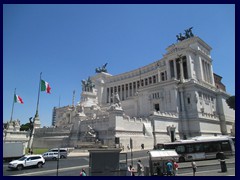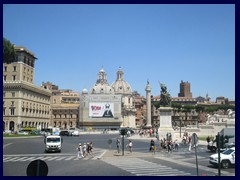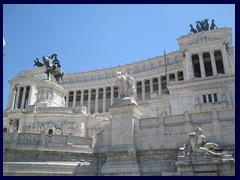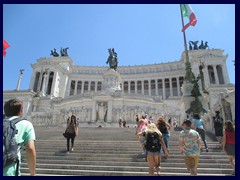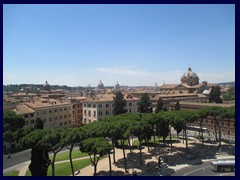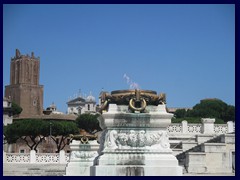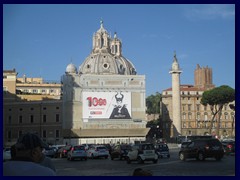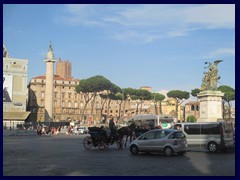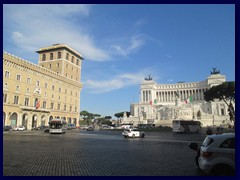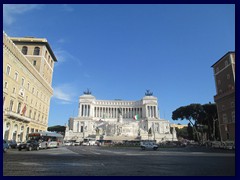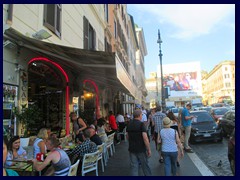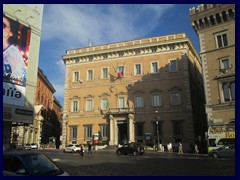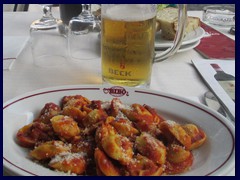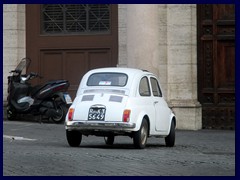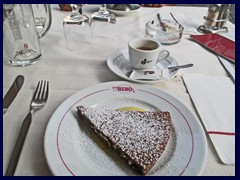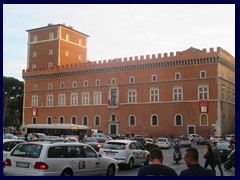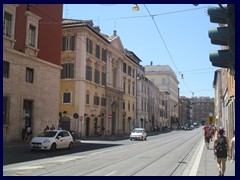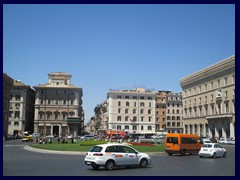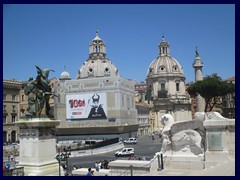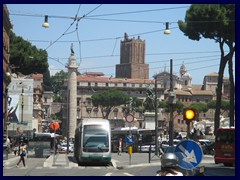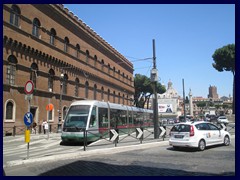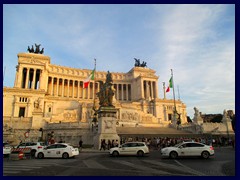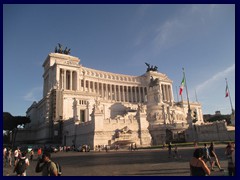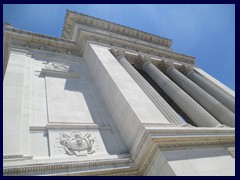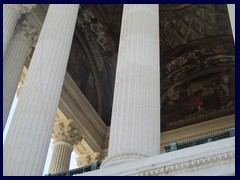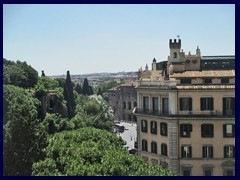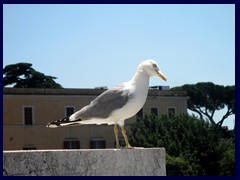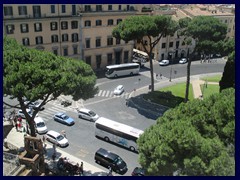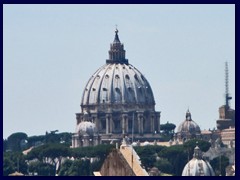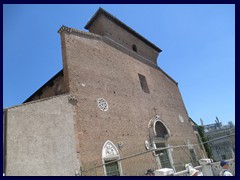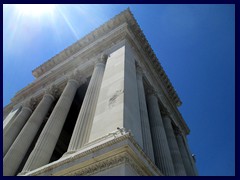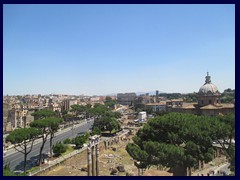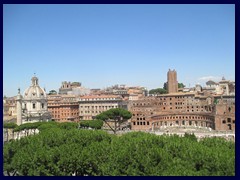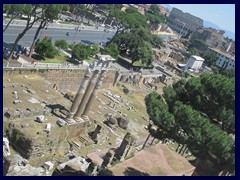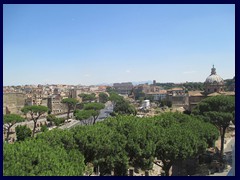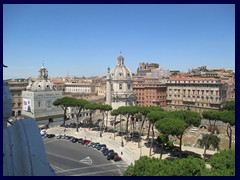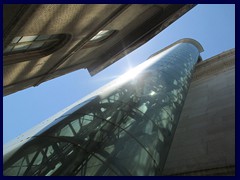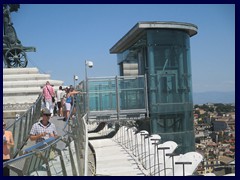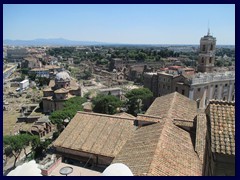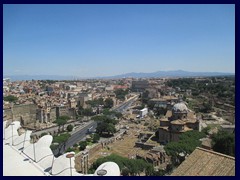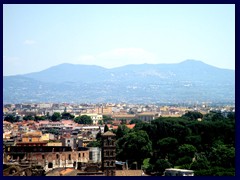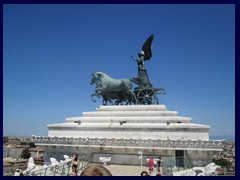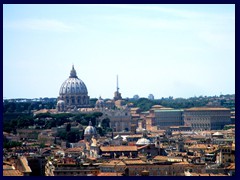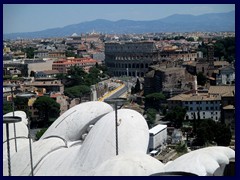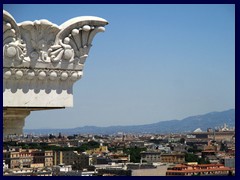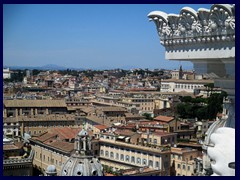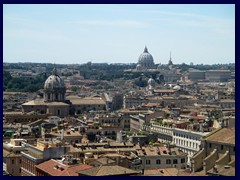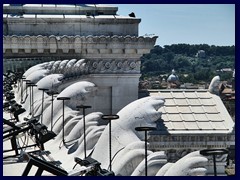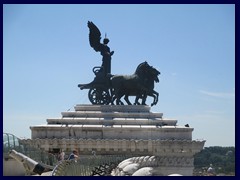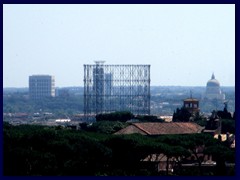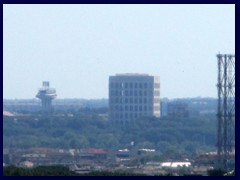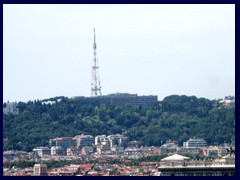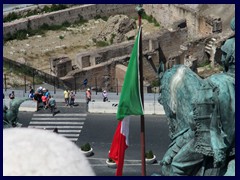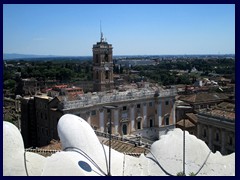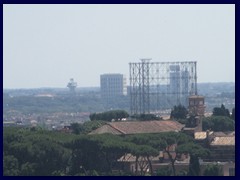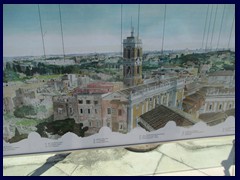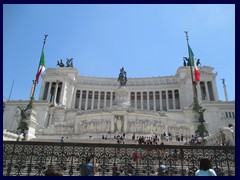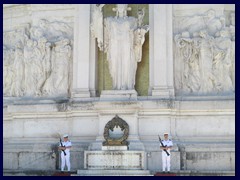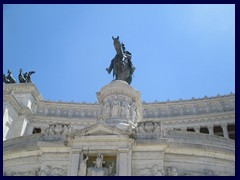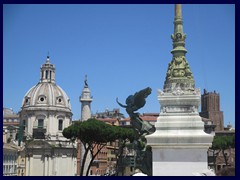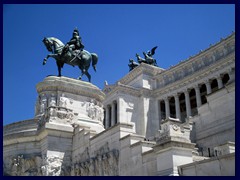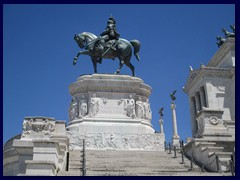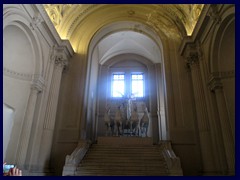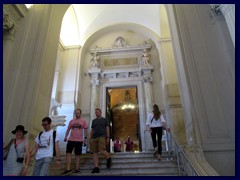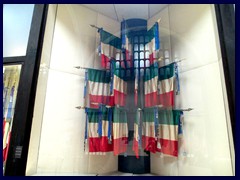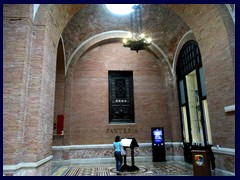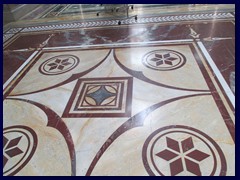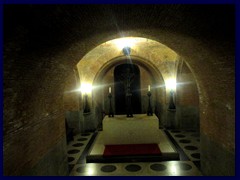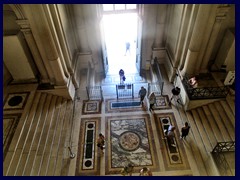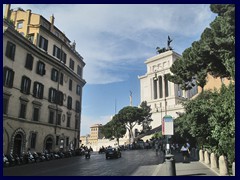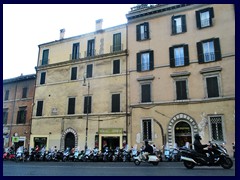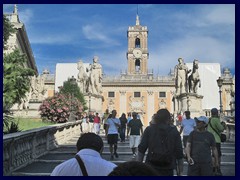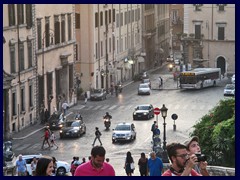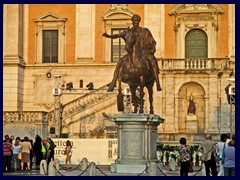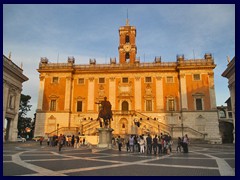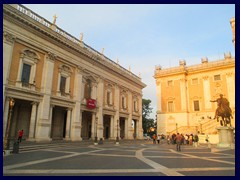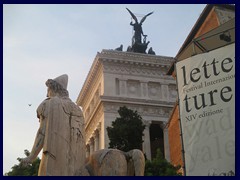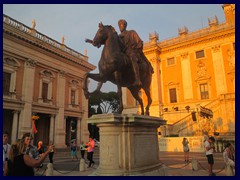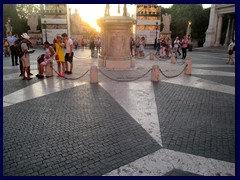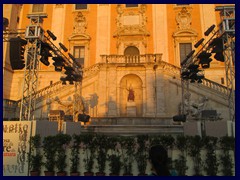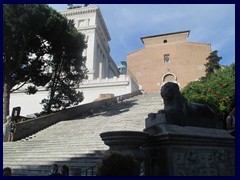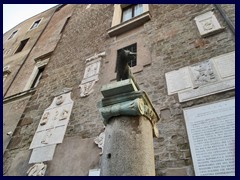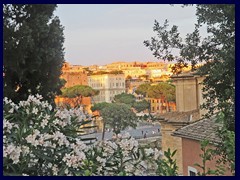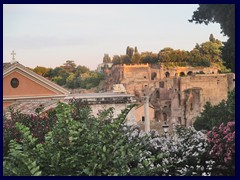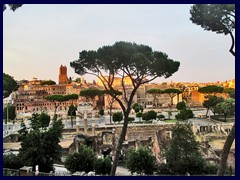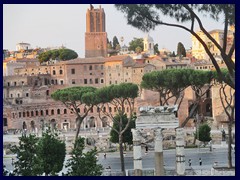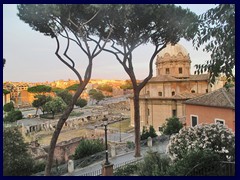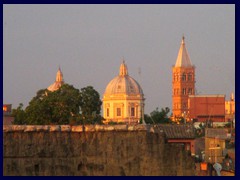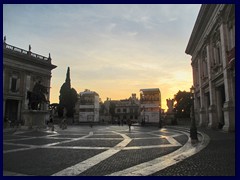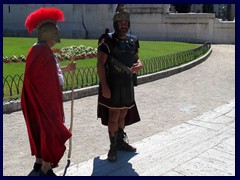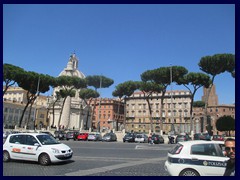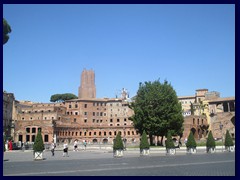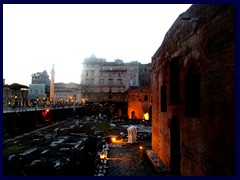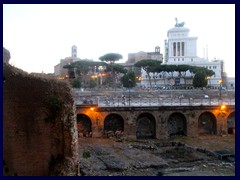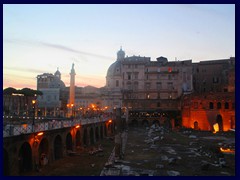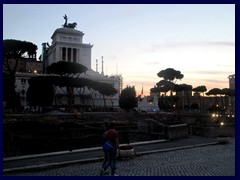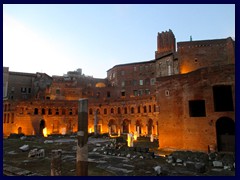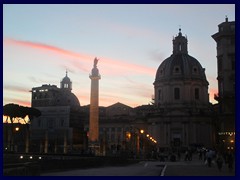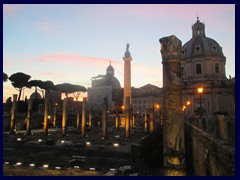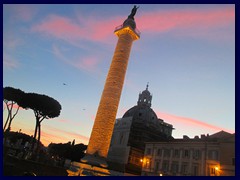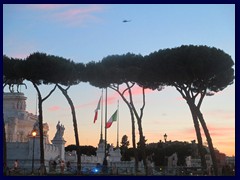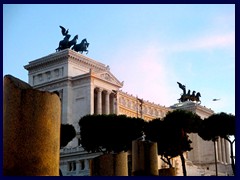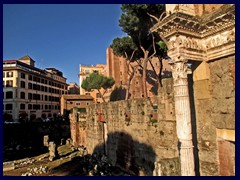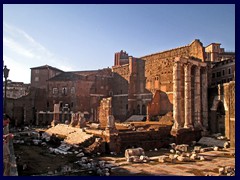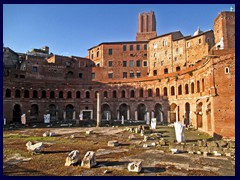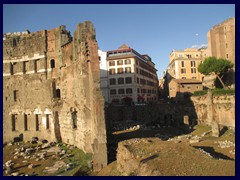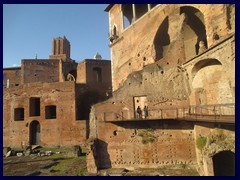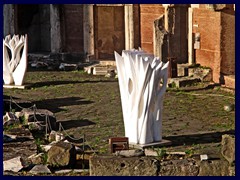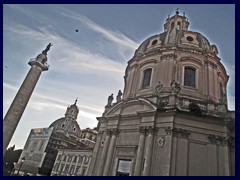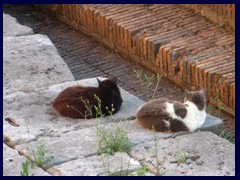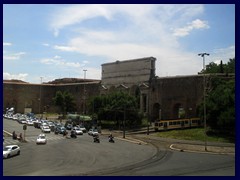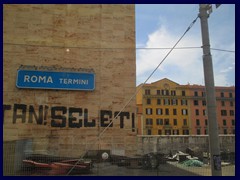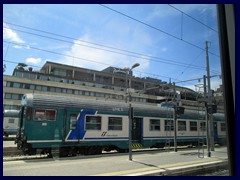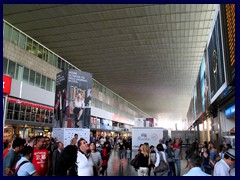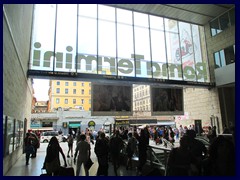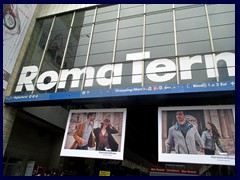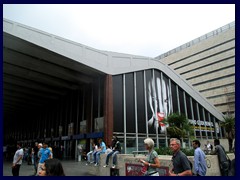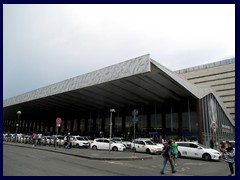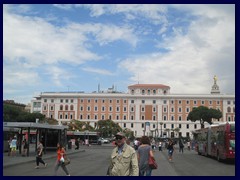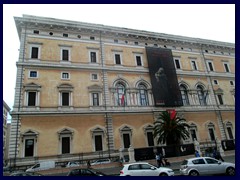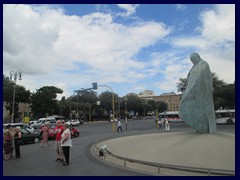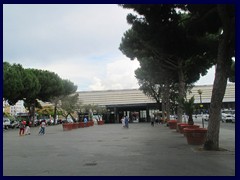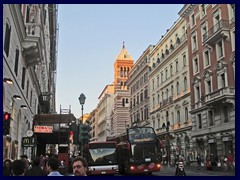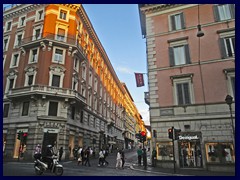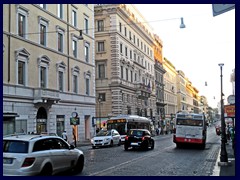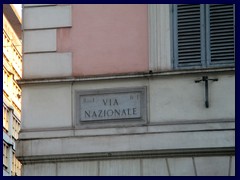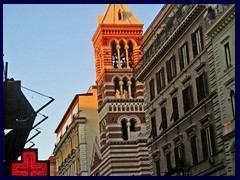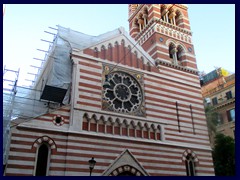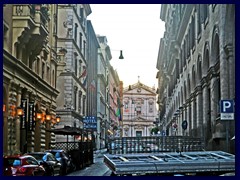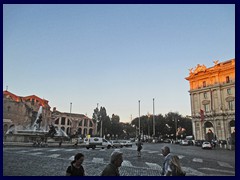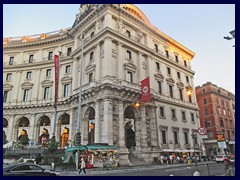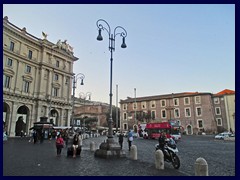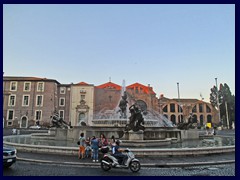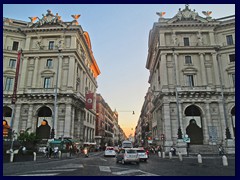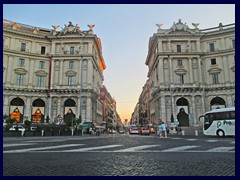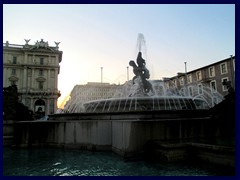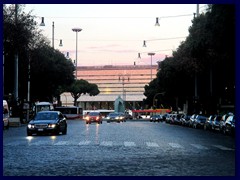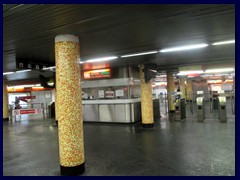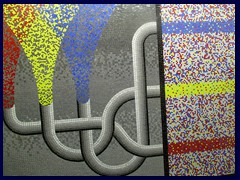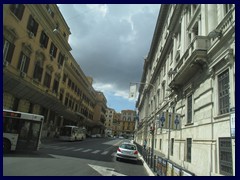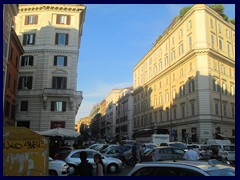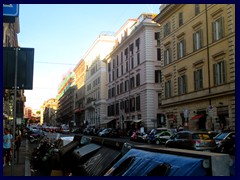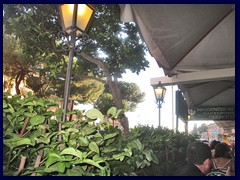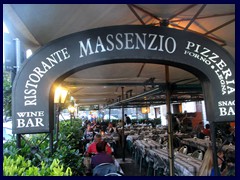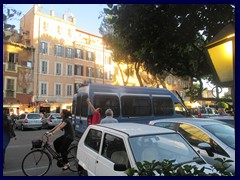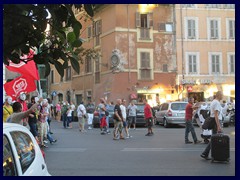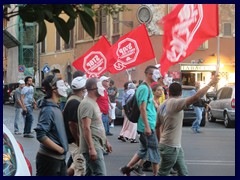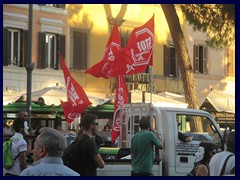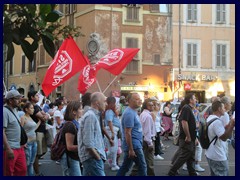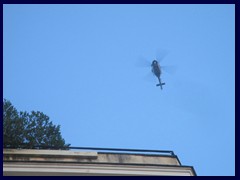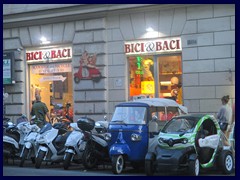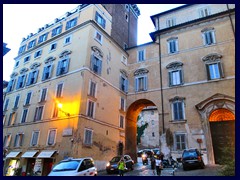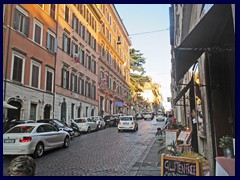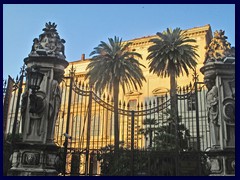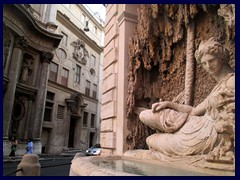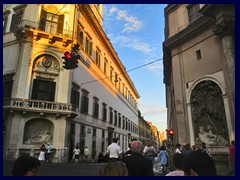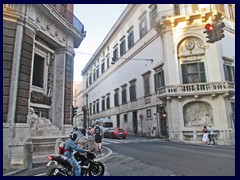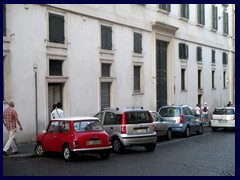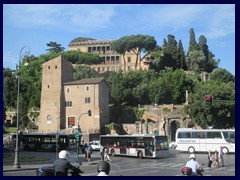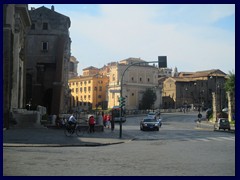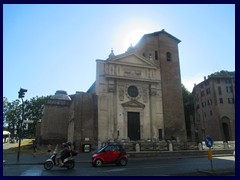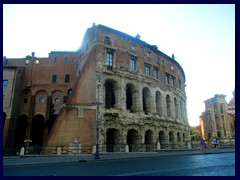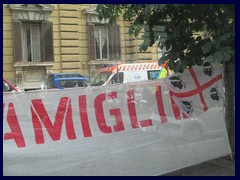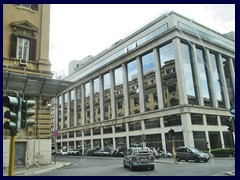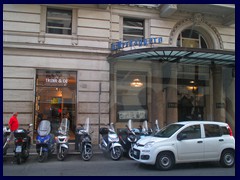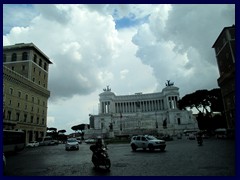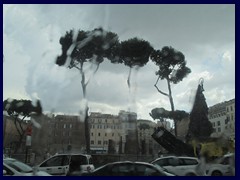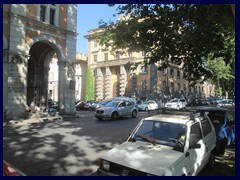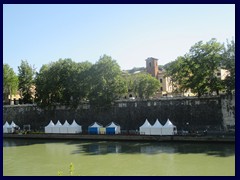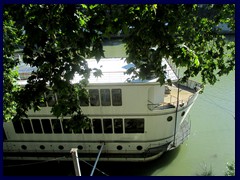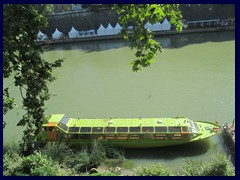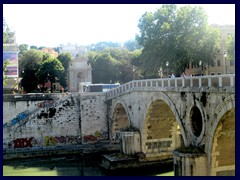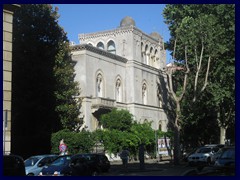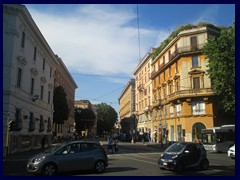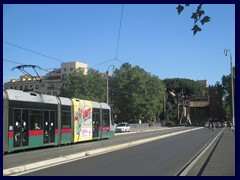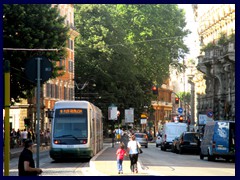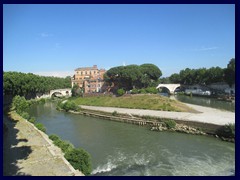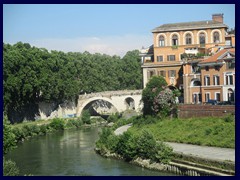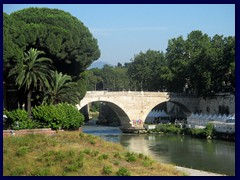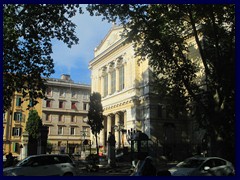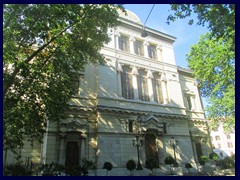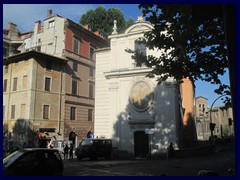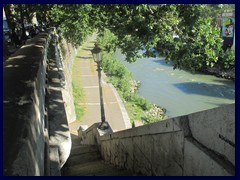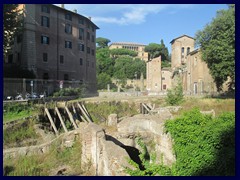Centro Storico East/Campus Martius
- Piazza Venezia, Monument to Vittorio Emanuele II, Capitoline Hill, Piazza de Campidoglio, Termini, Piazza Repubblica, Piazza dei Cinquecento, Forum Traiani, Trajan Forum, Forum of Augustus, Forum of Caesar, Via Cavour, Teatro Marcello, Via delle Quattro Fontane, Tiber
Monumento Nazionale a Vittorio Emanuele II (National Monument to Victor Emmanuel II) between Piazza Venezia and Capitoline Hill is a beautiful white marble classicist building that is the national monument of Italy, built to honour the first king of Italy. It is sometimes called Altare della Patria (Altar of the Fatherland). It was built 1885-1925 and is the largest monument in Rome. Here you find Tomb of the Unknown Soldier under the statue of the godess Roma. For a time Mussolini lived in the building. It has a height of 70m and is 135m. There are two observation decks on top, the highest is connected via glass elevator, we visited both. It also houses a museum dedicated to the history of the unification of Italy, Museo Centrale Risorgimento, hasrenaissance paintings and temporary exibitions. This eclectic renaissance structure was designed by Giuseppe Sacconi in 1885. A medieval area was destructed to make way for it. The monument is not known to be beautiful by locals and has been given nicknames such as "typewriter" and "wedding cake", but personally I think it is very beatiful and one of the most impressive buildings in Rome. Piazza Venezia is heavily trafficated square in front of the national monument (to to Victor Emmanuel II).
Piazza Venezia, is one of the most central places in Rome, as it's the end of Via del Corso and Via dei Foro Imperiali that leads to Colosseum. Here you also find Palazzo Venezia, that gave the square it's name. This renaissance palace was built 1455-64 as a papal residence, but houses today the Museo del Palazzo Venezia, a musuem of paitnings and arts. It has also been used as Mussolini's headquarters and as Venice's embassy. Opposite is Palazzo Generali, that is almost a copy of Palazzo Venezia. Palazzo Bonaparte is another palace, it was named after Emperor Napoleon I:s mother, who lived inside as the pope granted her asylum there after the empire fell. Capitoline Hill is the hill where you find the parliament. It is situated right behind the National Monument to Victor Emmanuel II. This not only the lowest of Rome's 7 hills, but also the most important hill and the original Capitol Hill, that the one in Washington DC was named after. The Cordonata stairs that were designed by Michelangelo leads up to Piazza de Campidoglio, a square with a geometric pattern that also was designed by Michelangelo. Here you find an equestrian statue of Marcus Aurlelius, the only equestrian bronze that survived since antiquity. It is situated in front of Palazzo Senatorio, the seat of Rome's mayor. The Capitoline Museums that you find here are considered the first museum in the world. The church Santa Maria in Aracoeli from the 6th century is just next to the square. Important buildings, like the Tabularum (ruins are left) and the Palace of Jupiter were situated on the hill in ancient times.
Termini Station is the modern main railway station of Rome.It opened in 1862 and was named after the Termini district, where it is situated, just East of the historical city center. It was bombed by the Americans during WWII, the current building opened in 1950. This is where we arrived by train from the airport, Fiumicino.
Piazza dei Cinquecento is a major traffic hub, since it is situated in front of the Termini Station. Here you also find the National Museum and a statue of Pope John Paul II. Piazza Repubblica is another square near the Termini station. It is shaped like a half circle and here you find The Fountain of the Naiads -an impressive fountain in the middle of the busy traffic, a large Boscolo luxury hotel (Exedra), Galleria Esedra (an elegant shopping galleria with mosaic glass roofs) and a church from the 1500s, the Basilica Santa Maria degli Angeli e dei Martiri. The hotel and the galleria are twin buildings in the Exedra complex. The former name of the square, Piazza dell'Esedra, is still used today.
Forum Traiani (Trajan Forum) is Emperor Trajan's ancient forums where you find the ruins of one of the worlds first shopping centers (Trajan's Markets), that was built in 110AD to purchase goods and conduct business. Trajan's Markets had 150 small stores, "tabernaes" along the main road, Via Biberatica, and offices. It was designed by Trajan's favourite architect,Apollodorus of Damascus. Next to it is Foro di Augusto (Forum of Augustus). Here you find Temple of Mars Ultor. Forum of Caesar (completed 46BC), a smaller forum can also be found here. These 3 forums are completely open to public and are situated near Piazza Venezia and the much larger Forum Romanum. Next to Trajan Forum you find Trajan's Column twin churches of Santissimo Nome di Maria al Foro Traiano and Santa Maria di Loreto.
Via Cavour (not to be confused with Piazza Cavour where our hotel was), is a hilly road that leads Eastwards from Piazza Venezia. As we sat down to have a pizza at a restaurant on Via Cavour, a big demonstration escorted with police vans suddently appeared.
Teatro Marcello, on Campus Martius (Field of Mars) between the banks of Tiber and Capitoline Hill, is a theater with an architecture that reminds of Colosseum, built in 13 BC. It was planned by Julius Caesar and several temples were demolished to make way for it. It was converted into a fortress in the 13th century and a palace for the Orsini family was built on top of the ancient theater in the 16th century. Today it is uses as apartments, and the surroundings for summer concerts. Theatre of Marcellus inspired the Sheldonian Theater in Oxford, England. Via delle Quattro Fontane is a hilly street that leads to an intersection with four different fountains (Quattro Fontane). Along this street you also find the Palazzo Barberini, an antique art museum inside a palace.

